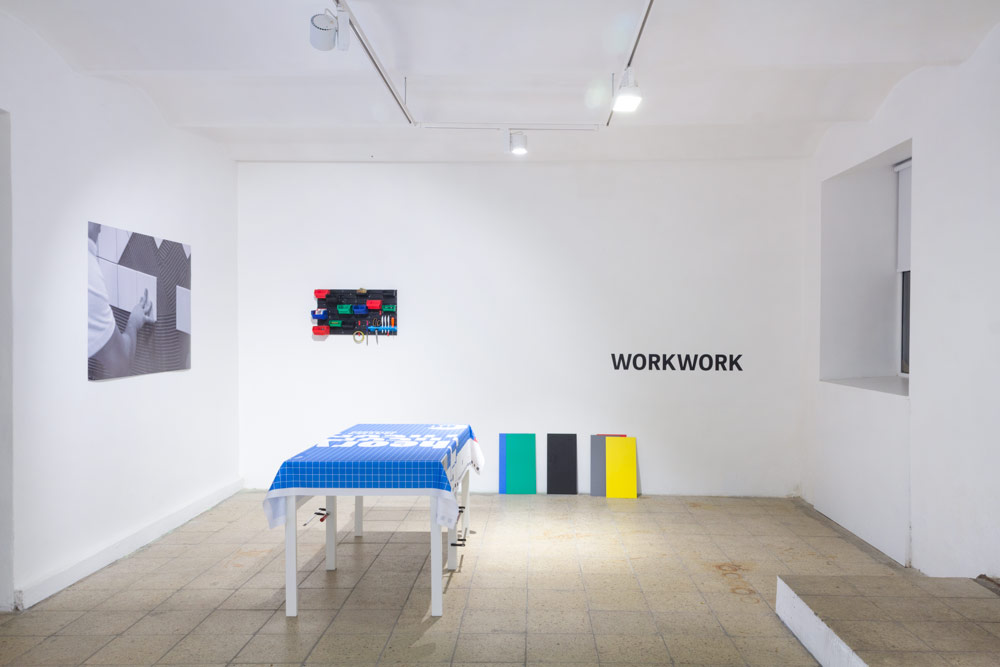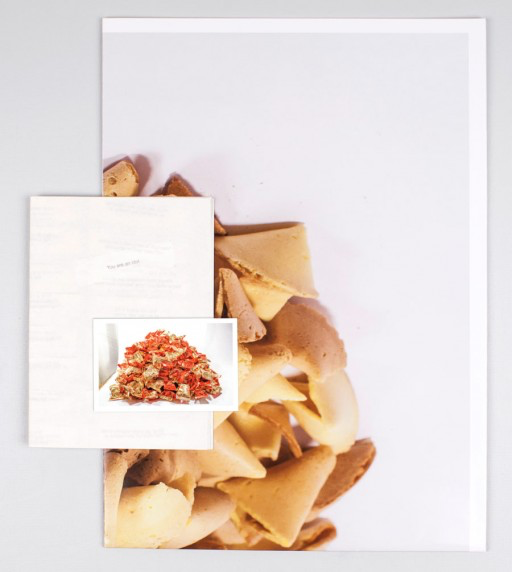BOOKMAKING AS THE CREATION OF THE LOW-COST ARTWORK
After over 10 years of making artists’ books, one thing seems clear for the Berlin-based publisher Gloria Glitzer: the book is the ultimate way to achieve artistic freedom. And the utopian ideal? To make a living from doing so.

Franziska Brandt and Moritz Grünke, you run Gloria Glitzer. Where would you position your publishing house in the larger field of art and design publishing? And how would you describe your contribution?
As Gloria Glitzer, making books is our practice. And for us this includes the whole process: creating the concept of the book, the content, taking care of the graphics, the printing, the binding and the distribution. Sometimes we work with partners such as printers, but all in all we believe in the DIY-philosophy and the enormous amount of freedom and flexibility it allows us in the process of bookmaking. After 10 years, it’s still an overwhelming experience when you create a book from a glimpse of an idea and it becomes a stack of various printed sheets, bound together in an edition, ready to be shared with the world.
For us, artists’ books are “low-cost” artworks that are accessible to a variety of people. Over the last couple of years, we have also collaborated with artists and worked on publications together. This has given us an insight into how artists work on their ideas and has opened up new perspectives on our own work. In a very few cases, we also “just” publish finished concepts by other artists – but this is only if the work fits our approach to artists’ books.

...it’s still an overwhelming experience when you create a book from a glimpse of an idea and it becomes a stack of various printed sheets.
In addition to your publishing house, Gloria Glitzer, you also run the print studio We make it and a public library dedicated to stencil printed artists’ publications. Does this mean you are self-sufficient when it comes to running the press and printing books? And how would you describe the economic model that the publishing house is run by?
We started We make it in order to share the skills we gathered over the past years of doing books and to make the machines we use accessible for other people. Moritz spends most of his time at the workshop and can make a living from printing and designing books, but we also have jobs on the side of this.
On the one hand, it’s a difficult situation and in our utopian dreams we could making a living from the books we create (it’s a world without any needs, just haves). On the other hand, in this capitalistic system we live in, we have the feeling this model (the workshop and side jobs) gives us more freedom when it comes to how we can make our books. We are not dependent on the financial success of our work. If we are hooked on an idea, we can work with it without spending time on questions like: “Does the cover have a ‘sales stimulating appearance’? And should we use three more colors to boost sales?”

When it comes to distribution, how large a part of your operation is it? If possible – how much resources and labour would you say is spent on actually distributing titles?
Most of our distribution works via art book fairs and festivals. There we can interact with the audience directly and communicate our concepts and ideas. We have very few stores that carry our artists’ books, and we work only in one or two cases with consignment sales. Over the years we have realized that only a very few stores are reliable partners.
Do you have any audiences that you imagine being the designated reader of a Gloria Glitzer publication?
No, but we see that our audience varies a lot. Some people enjoy the aesthetics, others are interested in one book only, some follow our activities closely, others collect all the books we do, and some just our periodical, the About Series. And this is a situation we really enjoy, as it demonstrates one of the advantages of books: to be an accessible medium to many people, as mentioned before.

For us artists’ books are ‘low-cost’ artworks that are accessible to a variety of people.

In the field of arts and design publishing, the 2000s and early 2010s were dominated by discussions around self-publishing. What do you believe is the most pressing and contemporary discourse in the field today?
There have been huge discussions concerning the digital versus the physical, which has affected the whole publishing field. Since then, there hasn’t been a global discourse beside the usual monetization question of publishers. Rather, there is a variety of discourses within all of the different sub-scenes of arts publishing. But to be honest, we can’t really say, maybe due to the lack of an outside perspective on the field.
©BABF2019